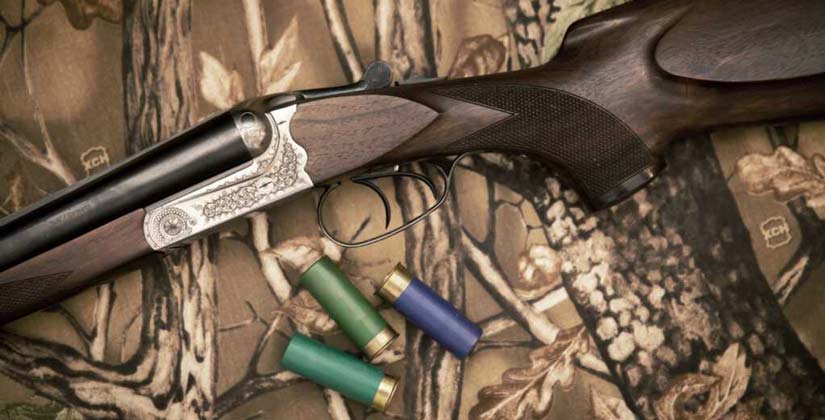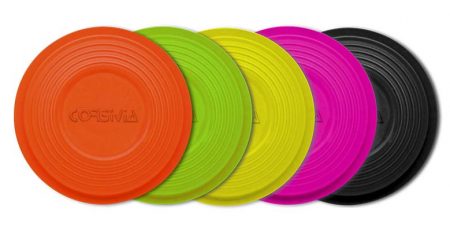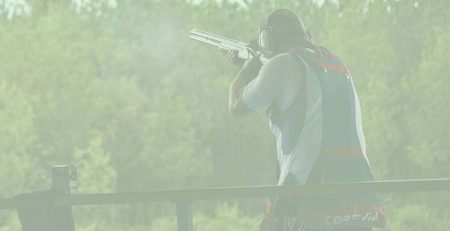HISTORY OF CLAY TARGET SHOOTING
Who would have thought that our hunter ancestors were setting the precedent for our sport when they hunted for survival? The imperative need to feed their families meant that, increasingly, they were able to sharpen their aim and focus their activity on the search for much more specific targets.
Hunting became, without doubt, the precedent for the sports we know today as Sporting Shooting or Olympic Shooting.
The vast majority of today’s shooters took their first steps in the world of hunting. This is not surprising, since our beloved sport helps the shooter test his marksmanship, skill and speed with the shotgun. And what’s more, it’s an activity that can be enjoyed all year round.
What hunter isn’t looking for just that?
ORIGINS OF CLAY TARGET SHOOTING
1871 marked the dawn of shooting sports when the National Rifle Association held the first big-name competitions in the United States.
However, it was not until 1880 that it went from being a hobby for only a privileged few from the upper social classes to becoming a very popular sport.
The reason: money, of course.
The cost of using the traditional pigeon for the sport dropped considerably when it was replaced by a clay device that promised very similar flight functions.
It was in 1915 that the discipline of “clay target shooting” first appeared in Massachusetts. Shooters took part in what was then known as “shooting around the clock”. In this discipline shooters stood at 12 different points on a circumference in order to change the variety of shooting angles.
This led to what is nowadays known as “Skeet shooting”.
DIFFERENT DISCIPLINES OF CLAY TARGET SHOOTING
Nowadays, clay target shooting is split into two main types: sporting and Olympic disciplines.
Sporting shooting includes numerous disciplines, such as Universal Trench, Mini-Trap, Sporting and Compak Sporting.
As for Olympic shooting, its best known discipline is Olympic Trap, although there is also Double Trap and Skeet.
Although as an Olympic sport, clay target shooting is relatively new, the number of fans is growing and it has undoubtedly become a contemporary Olympic sport.
But how did clay target shooting become an Olympic discipline?
THE BEGINNING AND EVOLUTION OF OLYMPIC CLAY TARGET SHOOTING
The sport of clay target shooting was first recognised as an Olympic discipline in the Olympic Games of Athens in 1896, and was included in the programme of activities.
On that occasion, 285 athletes from 13 different countries took part in competitions such as the free pistol over a 50-metre distance and the 25-metre rapid fire pistol. 116 of these athletes took part in Olympic shooting disciplines.
In the 2nd Olympic Games held in France in 1900, 166 shooters took part. And it was in 1908, in the Olympic Games of London that new forms of long gun, rifle and carbine were incorporated as individual disciplines.
A little later, in the 47th World Championships held in Barcelona in 1998, 2500 shooters from over 100 countries took part, being the first competition in which blind shooters put on a show.
Since its inclusion as an Olympic discipline, Olympic shooting has been a faithful participant at every Games. Although the number of events was reduced from 17 to 15 in the Olympic Games of Beijing in 2008, this sport has become increasingly popular with more and more people taking part.
So much so that there are now 16 shooting events included in the Olympic programme.
OFFICIAL REGULATORY BODIES
The International Shooting Union (UIT in French), which was established in Zurich (Switzerland) in 1907, was responsible for establishing the rules governing Olympic clay target shooting.
In 1998 this body was renamed the International Shooting Sport Federation (ISSF) as we know it today.
If you love outdoor sports and want to test your aim, clay target shooting is the ideal option that will allow you to improve your reflexes while having fun.
If you love this sport as much as we do, don’t miss our blog posts.
We promise you very interesting contents.
Would you like to find out more about this sport? Drop us a line, we’d be happy to help you.














